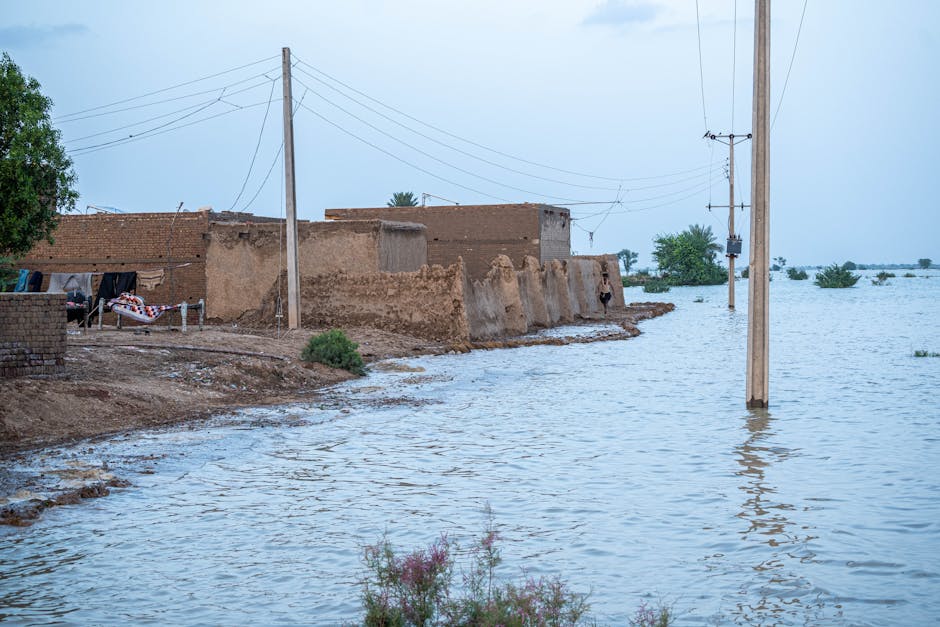The Impact of Location on Insurance Premiums
Insurance premiums are a crucial aspect of financial planning for individuals and businesses alike. They serve as a safeguard against unexpected events, offering protection and peace of mind. However, one often overlooked factor that significantly influences insurance premiums is the location of the insured property or individual. From auto insurance to home insurance, the geographical location plays a pivotal role in determining the cost of coverage. In this comprehensive guide, we will delve into the various ways in which location impacts insurance premiums, exploring the reasons behind these variations and the implications for policyholders.
The Geography of Risk

Insurance companies assess risk based on a variety of factors, with location being one of the most critical. Different areas face varying risks of natural disasters, crime rates, and other perils, which directly affect the likelihood of an insurance claim being filed. For example, if you live in an area prone to hurricanes, your homeowners’ insurance premiums are likely to be higher compared to someone living in a region with lower risk of such disasters. Similarly, urban areas often have higher rates of car accidents and theft, leading to increased auto insurance premiums for residents.
Climate plays a significant role in determining insurance premiums, as regions prone to natural disasters such as floods, earthquakes, or wildfires face higher risks. Insurance companies use historical data and predictive models to assess the likelihood of a specific event occurring in a particular location. This risk assessment directly influences the cost of insurance coverage, with higher-risk areas commanding higher premiums to offset potential losses.
For example, homeowners in earthquake-prone regions like California are required to purchase separate earthquake insurance due to the high risk of seismic activity. This additional coverage adds to the overall cost of homeowners’ insurance in these areas, reflecting the increased risk associated with living in such locations.
Urban vs. Rural Disparities

Another critical factor influencing insurance premiums is the distinction between urban and rural areas. Urban centers typically have higher population densities, leading to increased risks of accidents, theft, and property damage. As a result, residents of cities often pay higher insurance premiums compared to their rural counterparts.
Auto insurance premiums, for instance, are generally higher in urban areas due to higher rates of traffic accidents and vehicle theft. The frequency of claims in urban settings necessitates higher premiums to cover the associated risks. Additionally, the cost of living in cities impacts insurance rates, as repair and medical costs tend to be higher in urban areas, leading to increased coverage costs.
On the other hand, rural areas may face unique risks such as limited access to emergency services or increased exposure to natural disasters like wildfires. While these risks may be less frequent than those in urban areas, they can still impact insurance premiums for residents. Insurance companies adjust premiums based on the specific risks associated with each location, taking into account factors like proximity to fire stations, medical facilities, and other critical services.
State-by-State Variances

Insurance regulations and market dynamics vary significantly from state to state, leading to disparities in insurance premiums across the country. Each state sets its own rules and requirements for insurance coverage, impacting the cost of premiums for residents. Factors such as legal climate, weather patterns, and population density all contribute to the differences in insurance costs from one state to another.
For example, states like Florida and Louisiana have some of the highest homeowners’ insurance premiums in the country due to the increased risk of hurricanes and flooding. The cost of insuring properties in these states reflects the higher likelihood of severe weather events causing damage. Conversely, states with lower risk factors may have more affordable insurance premiums for similar coverage levels.
Similarly, auto insurance rates can vary significantly between states, with factors like traffic congestion, road conditions, and state regulations influencing the cost of coverage. States with higher rates of uninsured drivers may also see increased premiums for insured motorists, as the risk of being involved in an accident with an uninsured driver is higher in such regions.
Neighborhood-Level Considerations

Insurance companies not only evaluate risks at the city or state level but also consider the specific neighborhood where the insured property is located. Factors such as crime rates, proximity to fire stations, and the quality of local infrastructure can impact insurance premiums for residents. Neighborhoods with higher crime rates may face inflated homeowners’ insurance premiums due to the increased risk of theft or vandalism.
Similarly, the distance to emergency services like fire stations and hospitals can influence insurance costs. Properties located far from these essential services may face higher premiums, as response times in case of emergencies could be longer, potentially leading to more significant losses. Insurance companies take these factors into account when calculating premiums, as they directly affect the level of risk associated with insuring a property in a specific neighborhood.
Impact on Small Businesses
Small businesses are not immune to the effects of location on insurance premiums. Just as with individuals, the geographical location of a business can significantly impact the cost of insurance coverage. Factors such as crime rates, building construction, and proximity to high-risk areas all play a role in determining the insurance premiums for small businesses.
Business owners in urban areas may face higher insurance costs due to increased risks of theft, vandalism, and liability claims. The density of businesses in cities can also impact insurance rates, as competition for coverage and claims can affect pricing. Additionally, businesses located in areas prone to natural disasters may require specialized coverage to protect against such risks, leading to higher overall insurance premiums.
Small businesses in rural areas are not exempt from location-based insurance considerations. While rural settings may offer lower risks of certain perils like crime, they may face challenges related to remote locations and limited access to emergency services. Insurance companies assess these factors when determining premiums for small businesses, ensuring that coverage adequately reflects the risks associated with the business’s location.
Regulatory Implications
Insurance regulations at the state and federal levels can also impact the relationship between location and insurance premiums. State insurance departments oversee the insurance industry within their jurisdictions, setting rules and guidelines for insurers to follow. These regulations can influence the cost of insurance coverage, as companies must comply with state-mandated requirements when determining premiums.
Additionally, federal regulations such as the National Flood Insurance Program (NFIP) play a crucial role in setting standards for insurance coverage in high-risk flood zones. The NFIP provides flood insurance to property owners in participating communities, helping to mitigate the financial impact of flood-related losses. By establishing guidelines for flood insurance premiums based on flood risk zones, the NFIP ensures that property owners in vulnerable areas have access to affordable coverage.
Changes in regulatory frameworks can have significant implications for insurance premiums, especially in high-risk areas. For example, updates to building codes or zoning regulations in flood-prone regions may impact insurance costs for property owners, as compliance with new requirements could affect the level of risk associated with insuring a property in these areas.
Future Trends and Considerations
The relationship between location and insurance premiums is likely to evolve in the coming years, driven by factors such as climate change, urbanization, and technological advancements. As the frequency and severity of natural disasters increase, insurance companies may adjust their risk assessment models to account for changing environmental conditions. This could lead to higher premiums in regions experiencing more frequent extreme weather events, as insurers seek to manage their exposure to risk.
Urbanization trends may also impact insurance premiums, as population growth in cities could lead to increased risks of accidents, property damage, and liability claims. Insurance companies may need to adapt their pricing strategies to reflect the changing risk profiles of urban areas, potentially resulting in higher premiums for city dwellers. On the other hand, advancements in technology such as telematics and smart home devices could help insurers better assess risks and tailor coverage to individual policyholders, potentially leading to more personalized and cost-effective insurance options.
Policyholders should stay informed about these trends and consider how location may impact their insurance premiums in the future. By understanding the factors that influence insurance costs and taking proactive steps to mitigate risks, individuals and businesses can make informed decisions about their insurance coverage and ensure they are adequately protected against unforeseen events.
Conclusion
Location plays a significant role in determining insurance premiums, influencing the cost of coverage for individuals, businesses, and properties across the country. From urban centers to rural areas, each location presents unique risks that insurance companies must account for when setting premiums. Factors such as climate, population density, and proximity to emergency services all contribute to the variations in insurance costs seen in different regions.
As insurance regulations evolve and environmental conditions change, the relationship between location and insurance premiums will continue to shape the insurance industry. By understanding how location impacts insurance costs and staying informed about emerging trends, policyholders can make informed decisions about their coverage and ensure they are adequately protected against potential risks. Ultimately, recognizing the impact of location on insurance premiums is essential for navigating the complex world of insurance and securing the right coverage for your needs.
Stay tuned for more insights on how location influences insurance premiums and the latest developments in the insurance industry.




